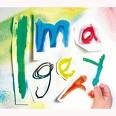Imagery for Self Help
"Begin to think of yourself becoming the person you want to be"
Jim Rohn

Imagery techniques and visualisation has long been used by most or perhaps all cultures of the world, ancient and modern, and by most therapeutic approaches.
Imagery is used as a means to:
- relax
- meditate

- improve future personal performance and development
- bring about future success
- gain confidence
- improve mood states
- reduce distress associated with traumatic memories
- gain understanding, insight, inner wisdom
- help overcome physical illnesses
- Improve sports performance
There is a growing body of evidence to support the use of therapeutic imagery in a wide variety of physical conditions, and increasing evidence of its effectiveness in mental health (e.g. Gilbert & Irons 2004, Holmes, Arntz, Smucker 2007, Holmes, Crane, Fennell, Williams 2007, Stopa 2009).
Imagery techniques are most often used as an integral part of a more comprehensive package of therapy.
Also see Compassionate Imagery
Starting With Imagery
Imagery is considered to be more effective when we are feeling relaxed, so when using these imagery techniques for self help, start by:
- getting comfortable
- in a quiet place where you won't be disturbed
- focus on your breathing for a few in and out breaths
- close your eyes
- become aware of any tension in your body
- let that tension go with each out-breath
All visualisations can be strengthened by ensuring you engage all your senses in building the picture in your mind's eye - it is more than just "seeing"!
If you notice any negative links or images entering your positive imagery (or positives entering negative imagery), then abort that image and think of something else.
Peaceful Place (Safe Place) Imagery
Use this visualisation to help you relax anytime, or before going to sleep at night.
Imagine an outdoor place where you can feel calm, peaceful and safe. It may be a place you've been to before, somewhere you've dreamt about going to, or maybe somewhere you've seen a picture of.
- Focus on what you can see in this peaceful place

- Notice colours, shapes, movement, light and texture in this place
- Now notice the sounds that are around you.
- Think about any smells you notice there.
- Then focus on any skin sensations - the earth beneath you, the temperature, any movement of air, anything else you can touch.
Now whilst you're in your peaceful place, you might choose to give it a name, whether one word or a phrase that you can use to bring that image back, anytime you need to.
You can choose to linger there a while, just enjoying the calm and serenity. You can leave whenever you want to, just by opening your eyes and being aware of where you are now.
Safe Place Imagery - print and download PDF
MP3 Guided Imagery/Relaxation MP3 Downloads
Goal Rehearsal / Achieving Future Success

Use goal rehearsal imagery for future feared situations or for making future goals more likely.
Consider, in detail, the trait, skill or behaviour you would like to achieve, in what situation, with whom etc.
Rehearse the situation in the imagination, using the desired behaviours, skills etc. Imagine seeing yourself in that situation, as you want to be - what you look like, how you sound - what you're saying and how you say it, how you see yourself acting.
Anticipate the responses of other people to this new you. Rehearse them responding in different ways, sometimes negatively - and then rehearse those difficult scenarios with yourself responding in the way you would like to respond.
If necessary, prepare a script of what you want to say (e.g. when planning to stand up to someone in authority).
Use this imagery several times a day, for a minimum of 10 days. The more you practice, the easier it becomes, and the easier you will find the actual situation when it happens.
For example, apprehension about a job interview:
- Enact a detailed scene in the mind
- Use different scenarios of the situation - see yourself being introduced to the interviewer, and also taking the initiative and introducing yourself, smiling, confident.
- Imagine being asked likely questions, and rehearse your responses.
- If you can't think of any words, just see yourself speaking and smiling confidently and see how positively the interviewers are reacting to you.
- See yourself looking calm and confident - imagine what that looks like, what you'll be doing, how you'll be doing it
Confident, Competent, Content

We can use imagery to help us feel better about ourselves.
Think of a situation or event in the past when you have strongly felt this way. Or think of a person (real or fictional) who has the qualities you desire.
Think about that time, or that person - what do you see? What do you hear? How are you/they behaving? What do you/they look like? What do you hear? What else do you notice?
- What feelings do you notice as you imagine yourself at that time, or being that person? What do you feel now?
- What physical sensations do you notice?
- Can you think of a word which describes this good feeling, a word you can use to bring back this feeling whenever you need it?
- Now focus on that word with the image, and notice the feelings
- You are now able to bring back this positive feeling, whenever you want or need to.
You can combine this technique with "Goal Rehearsal" and imagine yourself in a situation, with these positive feelings.
Most of the above techniques are available for download here
Breaking Bad Habits
Needing help in giving up smoking, unhealthy eating habits, or other unhelpful habits? Using negative, rather than positive, imagery can help by attaching a negative image to your unhealthy habit, causing you to want to avoid doing it. For example, someone who wants to stop eating chocolate might...
- Imagine eating a piece of chocolate, then noticing that the rest of the bar is covered in vomit (you could use any substance that you find particularly distasteful)
- Imagine the smell and taste of vomit in your mouth
- 'Feel' the sensation of wanting to gag and vomit
- Perhaps see and hear yourself vomiting down the front of your clothes, a brown, sticky liquid chocolate, mixed in with all manner of other noxious substances and smells, and consider the consequences of vomiting in this way
The more unpleasant the image, the more powerful it is likely to be.
Practice this imagery several times a day.
When you next feel the urge to eat chocolate (e.g.), bring up that vivid multi-sensory picture in your mind's eye, noticing all the sensations you experience.
Wise Inner Advisor
If you're unsure about something, or need some guidance, then we all have some form of wise inner part of us which knows.
Start with relaxing Safe Place imagery, then you can imagine walking along a path a little way and noticing a "Wise Inner Advisor" - this might be an older person, a representation of another being, perhaps a religious or spiritual figure, or some other being. Use whatever feels right for you.
Make the image stronger by focusing on the scene, what you can see, hear, smell, touch.
Spend some time just being with your Wise Inner Advisor, feeling peaceful and comfortable.
Take the opportunity to ask your Wise Inner Advisor for general guidance or for advice on a particular issue. Don't expect an immediate answer, but be receptive to whatever comes up.
Some people notice in the following hours, days or weeks that they've received their "answer", perhaps in a very unexpected way.
Positive Imagery For Depression
When we feel depressed, we get caught up in cycle of negative thinking and imagery, doing less, and consequently feeling more depressed (see this page). Whilst it can be difficult to change our negative thinking, people often find it easier to see themselves in their mind's eye, enjoying the activities they used to enjoy doing.
Doing this 2 or 3 times a day can be helpful in lifting our mood, and help us start to change our negative focus.
The activity we visualise need not be something we're planning to do in the future, the aim is simply to reactivate more helpful thinking and imagery. As with all other imagery exercises, it is helpful to strengthen the image by thinking about each of our senses, noticing even small details in what we can see and hear etc. It is also often helpful to use the other exercises described above.
Most of the above techniques are available for download here
Colour Visualisation & Breathing
Colour can be used just by visualising the colour which is likely to influence you positively. See this webpage for details about how colours affect us.
We can also visualise ourselves breathing in the desired colour associated with a positive or helpful feeling, and breathing out the colour associated with the negative feeling.
DEPRESSION: Breathe in orange (positive energy), breathe out blue / black
ANXIETY: Breathe in blue (calming), breathe out red
ANGER: Breathe in blue (calming) or green (balance), breathe out red.
Dealing with Distressing Images: Image Manipulation & Imagery Re-scripting
Sometimes we can get horribly distressing intrusive images that just pop into our heads, and we have trouble getting rid of them again. The image may be based on a real memory, or just some random terrible image. These images can trigger strong physical sensations, and intense emotions of fear, dread, anger or sadness.
We can learn to manipulate or change the image so that we reduce the distressing feelings:
Imagine putting the image on a TV screen, now with an imaginary remote control, make the image smaller, making it more distant, perhaps turn it into black and white, remove the sound or give it a different soundtrack.
Imagine a plate or sheet of strong clear plastic and put it between your face and the image. Push that image away from your face, until it gets smaller and is further away.
Change the imagery by coming up with a more positive or acceptable outcome - see it through to a successful completion (see examples such as goal rehearsal, confident & competent, or positive imagery for depression).
Transforming A Bad Feeling
Sometimes we can just get a bad emotional feeling in our body. We can turn this feeling around by using our imagination.
Ask yourself (example in italics):
- Where is this feeling in your body? Belly
- If this feeling had a shape, what would it be? Oval shaped
- How big would it be? Rugby ball sized
- And what colour would it be? Dark blue
- What texture or consistency would it be? Solid mass
And now:
- For this feeling to be better, what shape does it need to be? Round
- How big? Getting smaller
- And what colour would it be? Yellow
- What texture or consistency would it be? Warm, light, translucent
Most of the above techniques are available for download here
Working With Imagery - for clinicians (PDF)
Self Help Visualisation & Relaxation MP3 downloads
Books
In The Mind's Eye
Creative Visualisation For Dummies




















